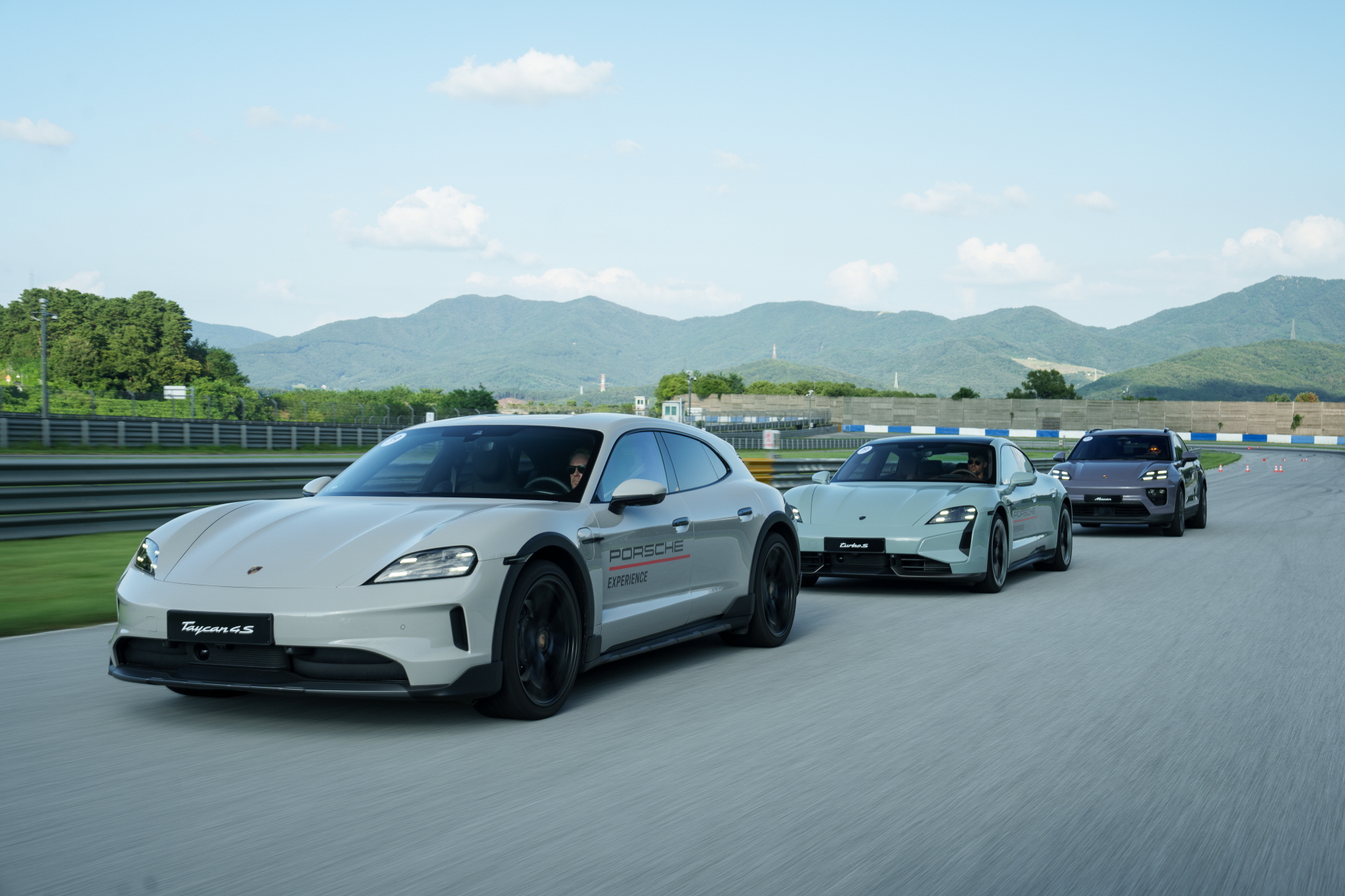
“Strong without a sound.” This describes Porsche’s electrified models, the new Taycan and Macan Electric. I experienced the new Taycan and Macan Electric on the 29th at the AMG Speedway in Yongin, Gyeonggi-do, during the Porsche World Roadshow.
The Porsche World Roadshow is an event directly organized by Porsche’s headquarters, traditionally attracting over 62,000 attendees from 55 countries worldwide. This year, the pre-launch Macan Electric and the new Taycan stole the spotlight.
First in line was the beautiful purple Taycan Turbo, resembling the cherry blossoms scattering along Yeouido Yunjungno. Measuring 4,962 × 1,966 × 1,381 mm, the captivating curves from the A-pillar to the C-pillar showcase that cars can indeed be this sexy.

With 2.4 turns from lock to lock, the steering response is heavy, just like a sports car should be. The Taycan Turbo boasts a 105KWh battery, delivering a maximum output of 707 horsepower (with overboost 884 horsepower) and peak torque of 90.8 kg.m. In Normal mode, the car glides effortlessly around the curves of the speedway as if skating, much like a shark searching for prey.
I switched to Sport mode on the straight. The steering reaction tightened, and the virtual engine sound pumped up the driver’s adrenaline like a festival cheer song.
While driving on the circuit, unavoidable discomfort can come from the uneven surface, but the more I drove the Taycan, the more it diminished. This is due to Porsche’s Active Ride Suspension, which maintained stability even in the tight hairpin sections of the speedway and demonstrated excellent performance under heavy braking, absorbing the shocks from the circuit’s undulating pavement to provide a smooth ride.
Next up was the not-yet-released Taycan Turbo S Cross Turismo model. While slightly shorter than the four-door electric sports car Taycan Turbo, its aerodynamic silhouette is indistinguishably Porsche-like. This beast boasts a system maximum power of 952 horsepower. Dominating the speedway with its virtual engine sound felt like riding a furious bull, being swept into a black hole.

I conducted a braking test with the Taycan Turbo S. When using overboost, the Taycan Turbo S showcases an impressive maximum output of 952 horsepower and peak torque of 113.2 kg.m. The electric revolution promises models nearing 1,000 horsepower for Porsche as well.
Two driving sessions began. The first was for full acceleration to a stop. The second session involved using launch control followed by braking.
In the first driving session, I slammed the accelerator per the instructor’s instructions. Before I could gather my thoughts, the car launched forward like a pebble shot from a slingshot. The second session engaging launch control let me experience the beastly power nearing 1,000 horsepower. To activate launch control, I needed to press the brake with my left foot while simultaneously pressing the accelerator with my right foot. After 4 seconds of simultaneously pressing both pedals, the dashboard displayed the message, “Launch Control Activated.” Then, I released my left foot from the brake. The power nearing 1,000 horsepower was beyond imagination. It felt as if I was traveling through time, transcending space and time. This was the moment to fully experience the meaning of going from 0 to 100 km/h in just 2.4 seconds.
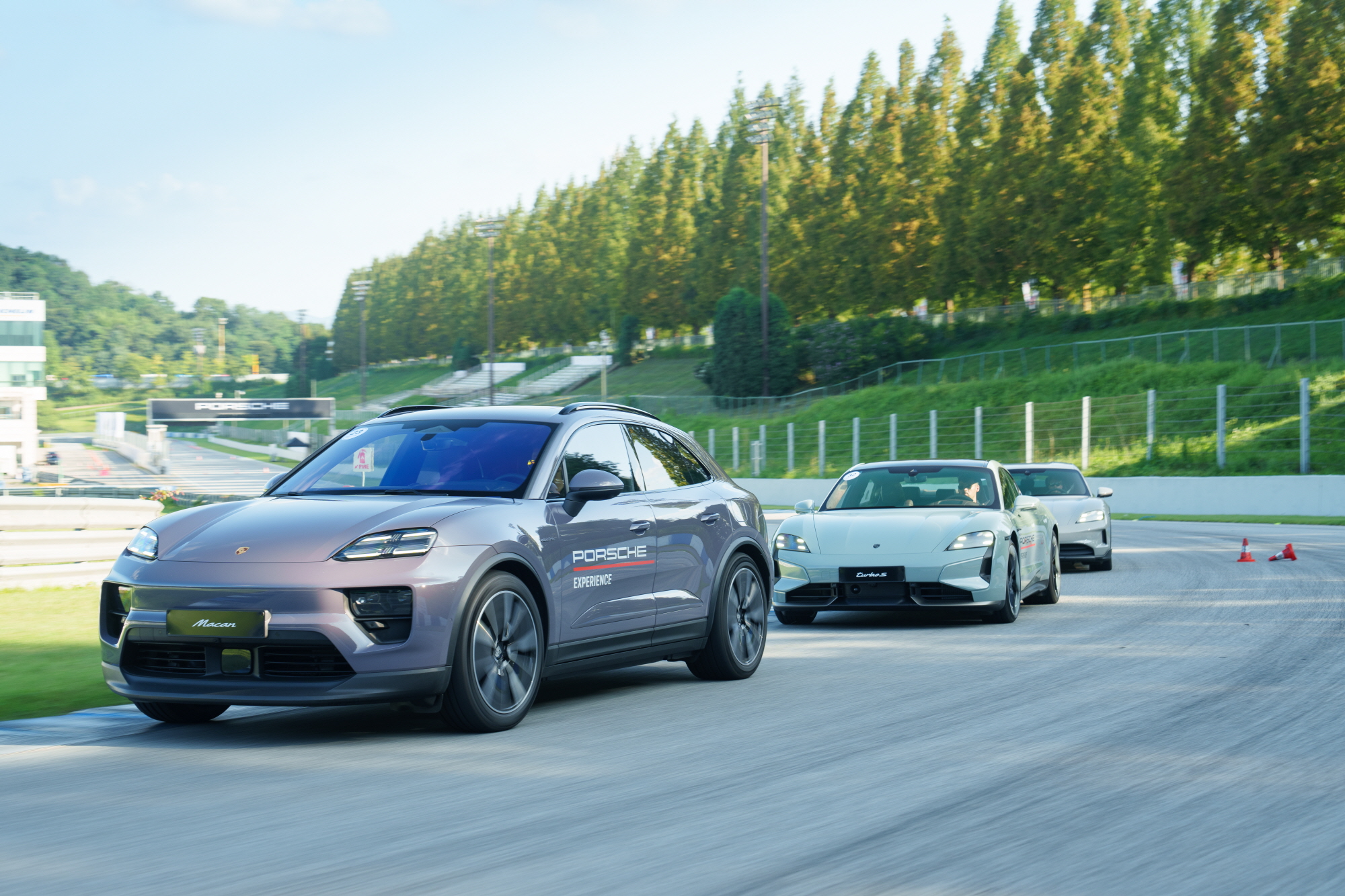
I met the Macan. Launched in South Korea in 2014, the Macan has become a pillar of Porsche’s sales. Now, it has transformed into its second generation, boldly eliminating the engine for carbon neutrality. The Macan Electric operates solely on electric motors and charged batteries.
Measuring 4,784 × 1,938 × 1,622 mm, the alluring aerodynamic roofline stretches from the A-pillar to the D-pillar, making it more reminiscent of a four-door sports car than an SUV. With a 2,893 mm wheelbase, it has only a 1 mm difference from the Cayenne, thanks to reduced front and rear overhangs.
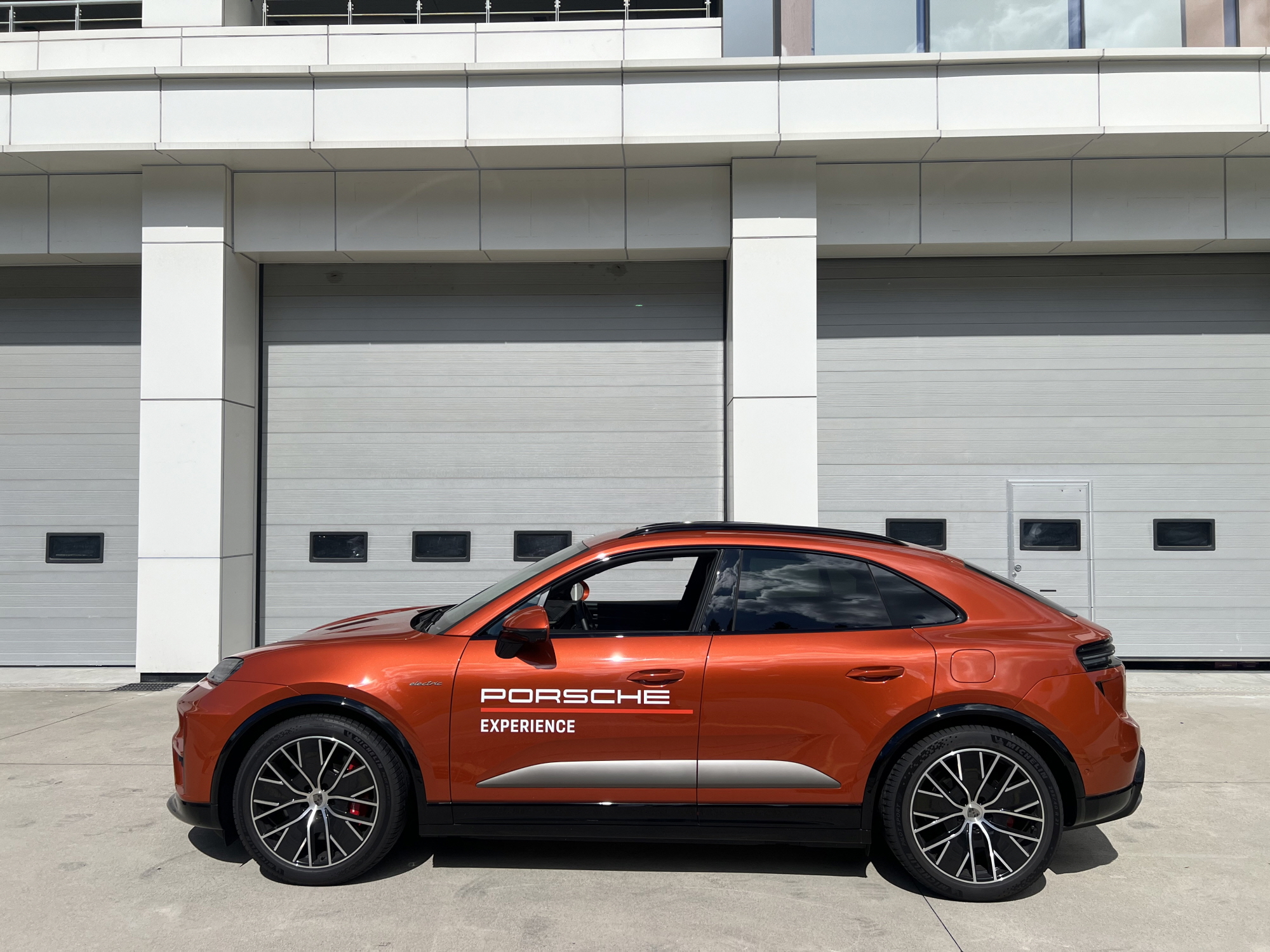
The driver seat features a 12.9-inch curved display, complemented by a 10.9-inch center display and a co-driver’s display. Now, the driver can stay focused on driving while the passenger can use in-car content without distracting the driver.
I encountered the Macan Electric Turbo. Its vibrant red color reflects Porsche’s racing passion in the scorching heat. The steering response measures 2.2 turns from lock to lock. The Macan exhibits a hefty steering response typical of high-performance sports SUVs.
With a maximum output of 584 horsepower (639 horsepower with overboost) and peak torque of 115.2 kg.m, the Macan Turbo showcases a nimbleness not typical of SUVs. It reaches 0 to 100 km/h in just 3.3 seconds, as illustrated by the head-up display showing astonishing speeds in the blink of an eye.
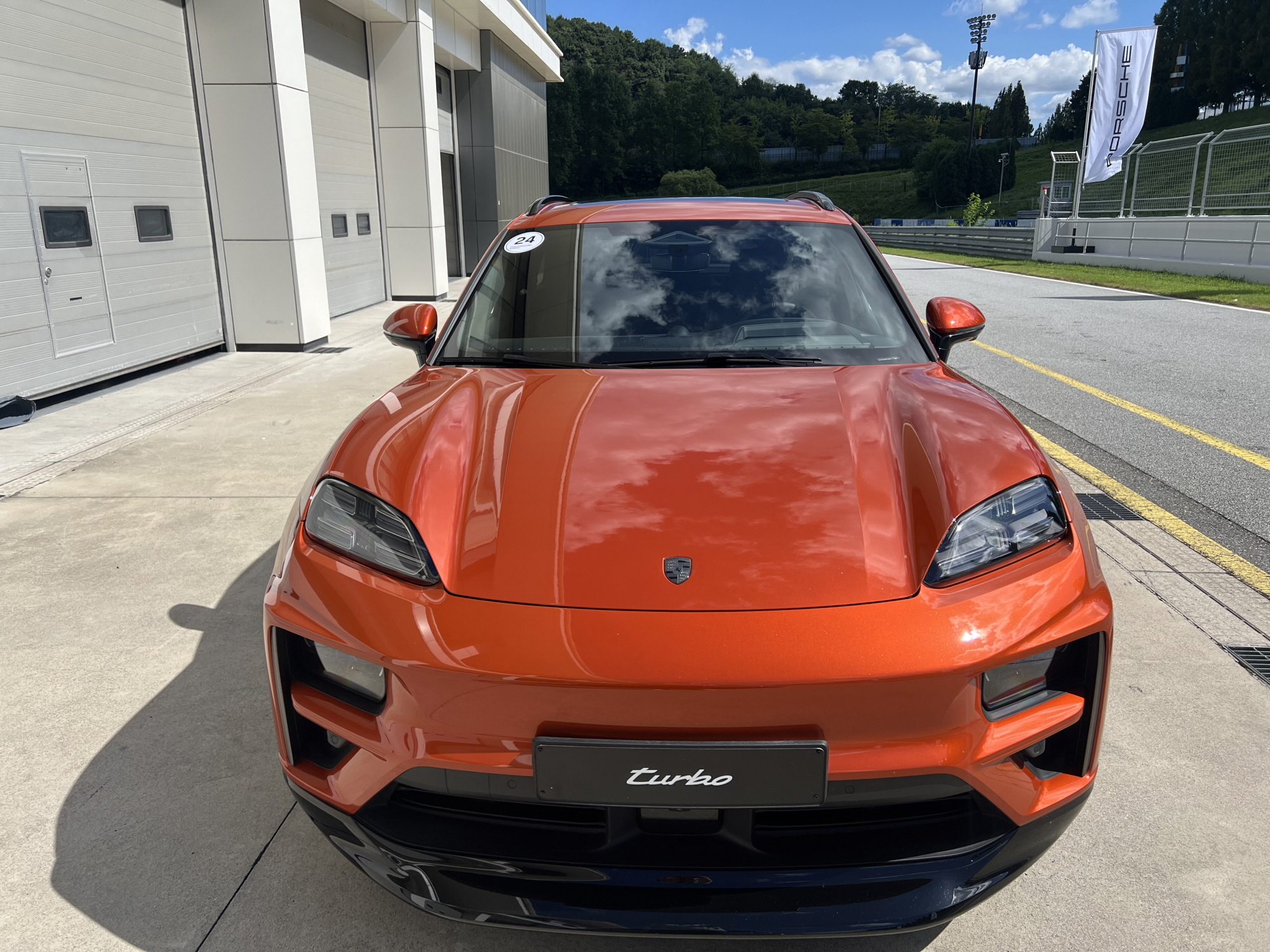
Some sections of the circuit have rubber cones laid out for rapid handling tests, but the Macan Turbo glided through such sections seamlessly, thanks to Porsche’s Active Suspension Management System. The rear axle steering system, operating at a maximum of 5 degrees, allowed smooth navigation through the speedway’s hairpin turns.
Then I met the Macan Electric 4. It delivers a maximum output of 387 horsepower (408 horsepower with overboost) and peak torque of 66.3 kg.m, showcasing capabilities that rival the Macan Turbo.
This transitional phase from internal combustion to electrification illustrates that the Macan Electric and Taycan prove to provide not just fun but also power beyond high-performance models with conventional engines.
The new Taycan will begin delivery to customers next month, while the Macan Electric aims for a release within the year.
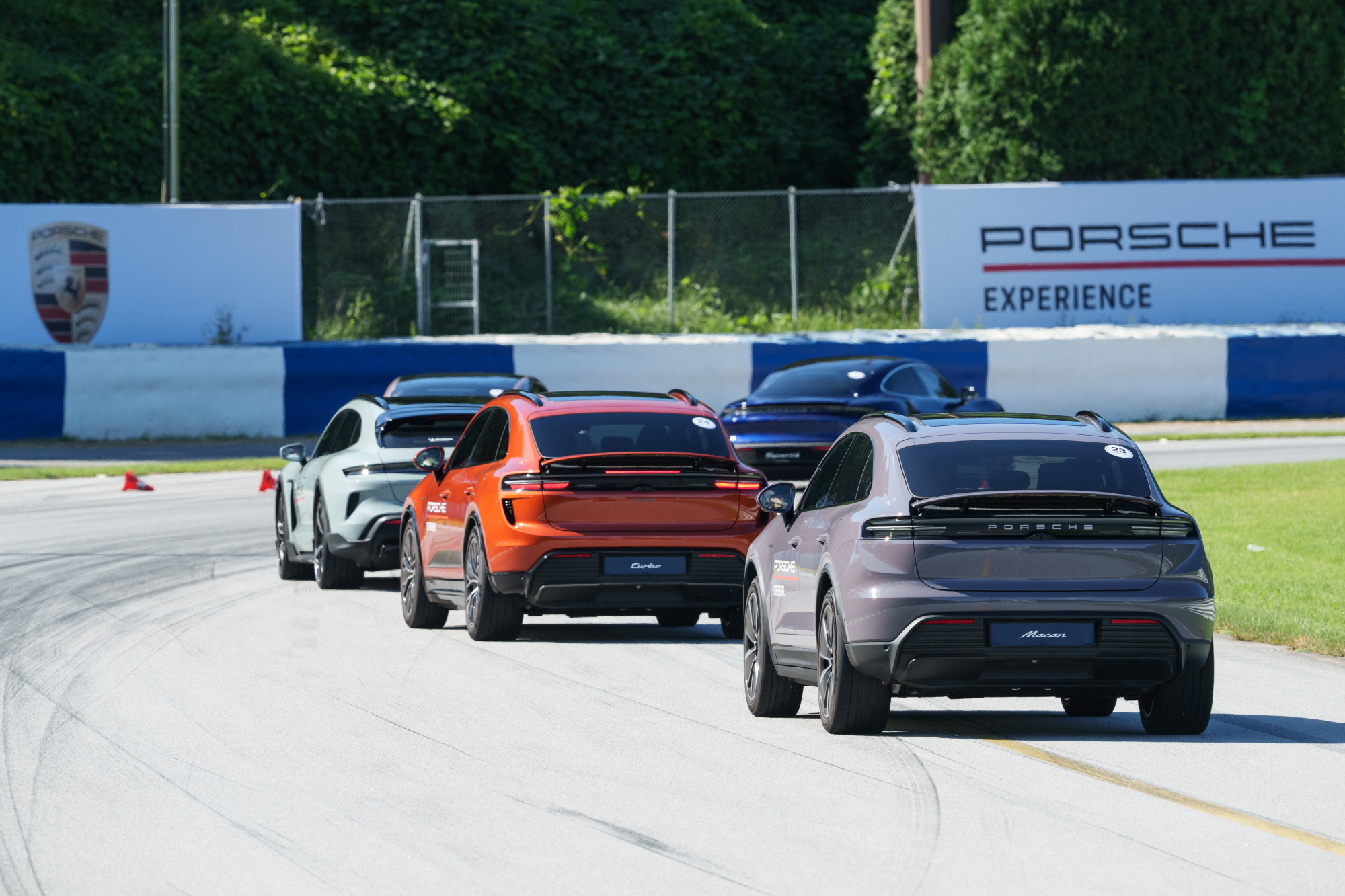
Lee Sang-jin daedusj@autodiary.kr

